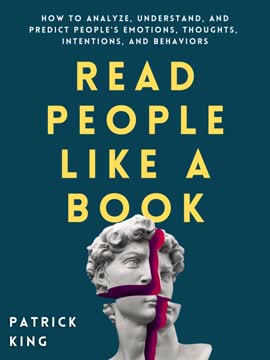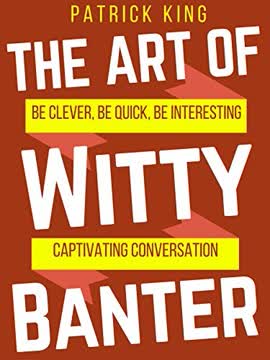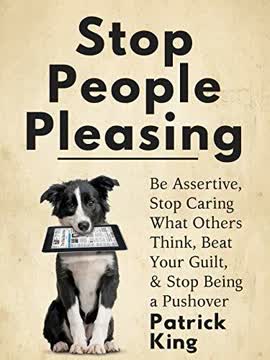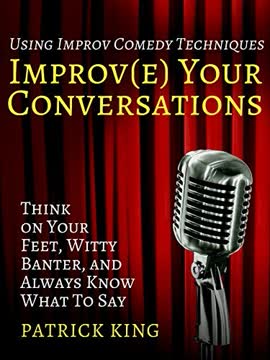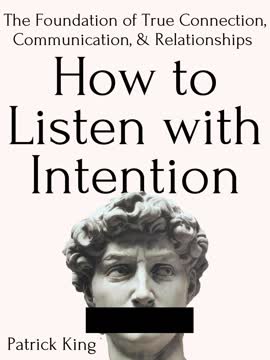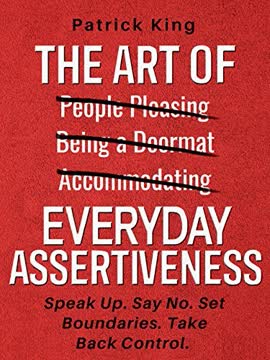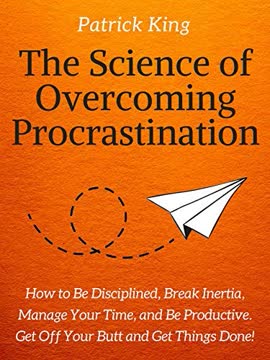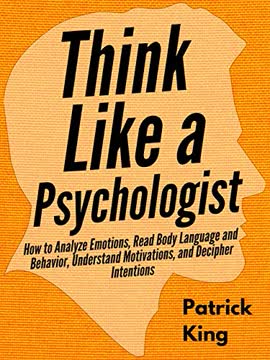Key Takeaways
1. Mirroring Builds Instant Rapport
Rather than mirroring being an optional trick, it’s really the foundation of all good communication and empathy.
Subconscious Connection. Mirroring, whether verbal, nonverbal, or emotional, creates a sense of connection and understanding. It's a primal form of communication that signals, "I see you, I understand you, we're on the same page." This technique enhances natural tendencies to match another person's communication style, fostering trust and rapport.
Verbal and Nonverbal Alignment. Verbal mirroring involves using similar language, tone, and pace as the other person. Nonverbal mirroring includes mimicking posture, gestures, and facial expressions. Emotional mirroring reflects the other person's emotional state, showing empathy and validation.
Authenticity is Key. Avoid being too obvious or manipulative with mirroring, as it can backfire. The goal is to enhance natural communication, not to create a superficial imitation. In conflict situations, avoid mirroring negative behaviors like anger or rudeness.
2. Conversations Thrive on Balanced Input
The rule of three states that we should never say three declaratives in a row without breaking them up with a question or qualifier.
Declaratives, Questions, and Qualifiers. Conversations should consist of a balance between declarative statements, questions, and qualifiers. Avoid dominating the conversation with a series of declarations without allowing for input from the other person. This approach ensures that the conversation feels collaborative and respectful.
Thoughtful Questions. Inject thoughtful questions to share the limelight, demonstrate interest, and communicate respect. Questions signal that the conversation is not just an opportunity for you to speak, but a collaborative social exercise.
Soften Declarations. Use qualifiers or "softeners" to express opinions without being overbearing. Phrases like "I know I don't speak for everyone, but..." or "From my perspective..." acknowledge that others may have different viewpoints.
3. Small Talk Can Lead to Big Connections
The ARE method can take a lot of the hard work out of small talk and get you into the interesting stuff – i.e. the big talk!
Anchor, Reveal, Encourage (ARE). The ARE method provides a structured approach to initiating and sustaining small talk. Start with an anchor, something that links you to the other person. Then, reveal something about yourself that relates to the anchor. Finally, encourage the other person to share something about themselves.
FORM Acronym. Use the FORM acronym to guide your small talk topics: Family, Occupation, Recreation, and Motivation. These topics are generally safe and easy to discuss, providing opportunities for connection and shared interests.
Escape Gracefully. If small talk isn't working, make a graceful exit by using an excuse that includes the word "need." For example, "It's been nice chatting, but I need to go and check on my kids." Smooth the departure by reiterating something positive from the conversation.
4. Brevity Keeps Listeners Engaged
As an unspoken rule, assume you have about 1 minute to make your point, and then let the conversation flow again.
The Traffic Light Rule. Limit your responses to about one minute to maintain your listener's attention. During the first 30 seconds, the light is green, and you have their full attention. In the next 30 seconds, the light turns yellow, and their attention may start to wane. Beyond one minute, the light is red, and you risk losing their interest.
Leave Them Wanting More. Don't share everything at once. Allow others to ask questions if they're curious. Sometimes, people are more interested in what you have to say when you leave a few things unsaid.
Delivery Matters. Focus on your delivery, modulating your voice to make your speech interesting. Think before you speak, and be as concise as possible. Avoid filler words like "um" and "like."
5. Ego Suspension Fosters Deeper Bonds
Ego suspension is simple but not easy: it’s when we deliberately put other people’s perceptions, wants and needs ahead of our own.
Prioritize Others. Ego suspension involves putting other people's perceptions, wants, and needs ahead of your own. It's about choosing to temporarily step into someone else's worldview, even if it means setting aside your own need to be right or in control.
Resist the Urge to Share. As you notice yourself going into "declaration mode," deliberately choose to let go of your anecdote. Instead, immerse yourself in someone else's story for a while. Just listen.
Nonjudgmental Validation. Forget about agreeing or disagreeing. Simply communicate that you're interested in the person in front of you and that you respectfully and curiously acknowledge their perspective.
6. Vulnerability Creates Stronger Connections
Connection and vulnerability go hand in hand.
Light, Medium, and Heavy Disclosure. Rapport can be built through gradually increasing moments of disclosure. Start with light disclosure, sharing a mild secret or an embarrassing story. If that's received well, move to medium disclosure, sharing opinions, beliefs, and more private experiences. Reserve heavy disclosure, sharing weaknesses, fears, and vulnerabilities, for those you want the deepest connections with.
Be Discerning. Start small and then ramp up. Diving into the deep stuff right off the bat doesn't work, and neither does never broaching stage 1 with someone you've known for years. Disclosure makes people feel special.
Use Discretion. Avoid dumping a load of upsetting or inappropriate material in the lap of a friend, especially if they're not expecting it. Vulnerable disclosure is not about recklessly baring all your most intimate problems for others to see.
7. Voice Tonality Shapes Perception
The words you say matter, but how you say them may matter even more.
Emotional Signal. Your tone of voice is a purely emotional signal that is perceived before the rational component of your message. It reveals your personality, state of mind, intentions, and even your health.
Pitch, Volume, and Pace. Vary your pitch to avoid speaking in a monotone. Adjust your volume to match the context and signal different emotions. Control your pace to convey confidence and intelligence without sounding anxious or rushed.
Articulation Matters. Enunciate each word clearly to avoid creating a barrier between you and your listener. Poor articulation can be associated with laziness, lack of education, or boredom.
8. Open Loops Keep Conversations Flowing
Using an open loop is as easy as starting a compelling story, and then simply not finishing it.
Unfinished Stories. An open loop is a conversation line that you deliberately leave open so you can loop back to it later if you wish. It's as easy as starting a compelling story and then simply not finishing it.
Conversational Save Points. Open loops serve as conversational save points, allowing you to return to a previous topic if the conversation dries up. They create a sense of shared history and rapport with the other person.
Awareness and Memory. The only skills you need to make convincing loops are a sense of focused awareness and a good memory. When you loop back, you're essentially telling someone, "Hey, I was paying attention back there, and I care about this. Let's keep talking..."
9. Empathy Overcomes Conversational Blind Spots
Empathy allows us to peek out of our blind spots and check in on others when we’re most likely to forget them and become overly engaged with ourselves.
Unaware Self-Centeredness. The very thing that makes us bad at conversations is also the thing that makes us bad at recognizing that we're bad at conversations: unaware self-centeredness. It can take enormous amounts of self-awareness, discipline, and practice to stop acting as though a conversation is the same as "delivering a monologue in another person's company."
Suspension of Assumptions. Don't assume you have no conversational blind spots, that others think, feel, or believe as you do, or that the other person sees the conversation the same way as you do. The whole point of conversation is to encounter another person who is not you, so don't assume you already know who they are and what they think.
The "Double Click" Technique. Imagine that almost every sentence they say is blue and underlined, completely unexplored. "Double click" on it to ask them to expand, to tell you more, to go deeper.
10. End Conversations Gracefully
Conversations almost never ended when both conversants wanted them to and rarely ended when even one conversant wanted them to and that the average discrepancy between desired and actual durations was roughly half the duration of the conversation.
Timing is Everything. The best thing you can do for a great conversation is know when to end it. Most people tend to want conversations to be shorter.
Positive, Excuse, Disengage. The trick to ending conversations is to be calm and confident about it. Wait for the right moment, start with a positive, make an excuse, and firmly disengage.
Leave Them Wanting More. Ending on a high note can close off a conversation in a neat, positive way so that you both feel eager to talk again the next time you meet. Leave a few things unsaid, create a little mystery, and who knows, you might be letting someone off the hook!
Last updated:
FAQ
1. What is "How to Talk to Anyone" by Patrick King about?
- Practical Conversation Guide: The book is a practical guide offering 27 actionable strategies to improve your conversational skills, charm, and social intelligence.
- Focus on Connection: It emphasizes genuine connection, empathy, and playfulness over performance, competition, or impressing others.
- Applicable to All Situations: The advice is designed for use in professional, romantic, and casual settings, making it broadly applicable.
- Science-Backed Techniques: Patrick King incorporates psychological research and real-world examples to support his methods for becoming more charismatic and likeable.
2. Why should I read "How to Talk to Anyone" by Patrick King?
- Overcome Social Awkwardness: The book provides tools to avoid awkward silences, handle small talk, and navigate difficult conversations with confidence.
- Boost Charisma and Likability: You'll learn how to be more engaging, memorable, and appealing in any social situation.
- Develop Deeper Connections: The focus on empathy, vulnerability, and active listening helps foster more meaningful relationships.
- Actionable, Easy-to-Apply Tips: Each chapter offers clear, step-by-step methods you can start using immediately to improve your interactions.
3. What are the key takeaways from "How to Talk to Anyone" by Patrick King?
- Connection Over Performance: True charm comes from making others feel seen and valued, not from being witty or impressive.
- Active Listening is Crucial: Listening with intent, asking questions, and reflecting emotions are more important than talking.
- Vulnerability Builds Rapport: Gradual self-disclosure and sharing stories create trust and deeper bonds.
- Practical Conversation Tools: Techniques like mirroring, the ARE method, the rule of three, and the 1-minute rule help structure better conversations.
4. What is the "mirroring" technique in "How to Talk to Anyone" and how does it work?
- Definition: Mirroring involves subtly matching another person's verbal, nonverbal, or emotional cues to signal understanding and connection.
- Types of Mirroring: It can be verbal (repeating phrases), nonverbal (matching posture or gestures), or emotional (reflecting feelings).
- Builds Trust and Rapport: Scientific studies cited in the book show mirroring increases negotiation success and makes people feel understood.
- Natural and Subtle: Overdoing it can seem manipulative; mirroring should be natural and responsive to the other person's cues.
5. How does the "rule of three" improve conversations according to Patrick King?
- Balanced Dialogue: The rule states you should never make more than three declarative statements in a row without inserting a question or qualifier.
- Prevents Monologues: This keeps conversations from feeling like lectures and ensures both parties are engaged.
- Shows Respect and Interest: Asking questions or using softeners demonstrates you value the other person's perspective.
- Easy to Implement: Simply become aware of your speech patterns and consciously balance statements with inquiries.
6. What is the ARE method for small talk in "How to Talk to Anyone"?
- Acronym Explained: ARE stands for Anchor, Reveal, and Encourage.
- Step-by-Step: Start with an anchor (shared experience), reveal something about yourself, then encourage the other person to share.
- Moves Beyond Small Talk: This structure helps transition from surface-level conversation to more meaningful topics.
- Flexible and Natural: The method is adaptable and can be combined with the FORM topics (Family, Occupation, Recreation, Motivation) for variety.
7. How can I avoid being boring in conversations, according to Patrick King?
- Emphasize Fun and Playfulness: Boring people are often perceived as negative, self-centered, or overly serious; being open, lighthearted, and engaged is key.
- Share Passions and Stories: Talk about your interests and experiences with enthusiasm to appear more interesting.
- Avoid Stereotypical "Boring" Traits: Traits like being passive, uncreative, or reserved can be countered by showing curiosity and warmth.
- Self-Edit When Needed: If your hobbies or job are stereotypically dull, highlight other aspects of your personality to keep things lively.
8. What role does vulnerability and self-disclosure play in building rapport, as described in "How to Talk to Anyone"?
- Three Levels of Disclosure: Start with light (harmless secrets), move to medium (beliefs and opinions), and only share heavy (deep vulnerabilities) with trusted individuals.
- Builds Trust and Intimacy: Gradual self-disclosure signals trust and invites others to open up, deepening the relationship.
- Creates Connection Stories: Sharing personal anecdotes that reflect your values helps others relate to you.
- Be Selective and Appropriate: Oversharing too soon or with the wrong audience can backfire; calibrate based on the other person's response.
9. What are some advanced conversational techniques from "How to Talk to Anyone" by Patrick King?
- Open Loops: Start stories or topics without finishing them, creating curiosity and opportunities to revisit them later.
- Metaphors and Vivid Language: Use colorful analogies and imagery to make your points more memorable and engaging.
- "Yes, and" Mindset: Borrowed from improv, this technique keeps conversations flowing by affirming and building on what others say, rather than blocking with "but."
- Cold Reading: Make high-probability guesses and observations to show attentiveness and make others feel understood.
10. How does Patrick King suggest handling awkward silences and ending conversations gracefully?
- 1-Minute Traffic Light Rule: Limit your speaking turns to about one minute to avoid rambling and keep the exchange dynamic.
- Responsive and Quick: Fast response times help people feel more connected and keep the conversation lively.
- Graceful Exits: End conversations on a positive note, make a polite excuse, and disengage firmly but warmly.
- Most People Want Shorter Conversations: Research shows most conversations last longer than both parties desire, so it's better to end a bit early than too late.
11. What is "active listening" in "How to Talk to Anyone" and how can I practice it?
- More Than Hearing: Active listening involves comprehending, retaining, and responding to what the other person says, not just passively hearing.
- Nine Techniques: These include restating, reflecting, summarizing, labeling emotions, probing, and using silence effectively.
- Suppress Ego: Focus on the speaker's perspective rather than planning your own response or judging.
- Encourages Deeper Connection: Active listening makes others feel valued and understood, which is essential for building rapport.
12. What scientific research and psychological principles does Patrick King reference in "How to Talk to Anyone"?
- Mirroring and Negotiation: Studies show mirroring increases settlement rates and rapport in negotiations.
- Self-Disclosure and Closeness: Research by Arthur Aron demonstrates that sharing personal information fosters trust and intimacy.
- Similarity-Attraction Effect: People are drawn to those who share their values, interests, or even dislikes, as shown in studies by Newcomb and others.
- Conversation Dynamics: Research on response times, conversation endings, and the impact of vulnerability all inform the book's practical advice.
Review Summary
How to Talk to Anyone receives mixed reviews, with an average rating of 3.60 out of 5. Some readers find it informative and packed with useful tips for improving conversation skills, while others criticize it as lacking substance and being more of a list than a book. Positive reviews highlight the book's focus on active listening, empathy, and building deeper connections. Critics argue that much of the advice is common sense or repetitive. Overall, readers appreciate the practical advice but find the depth and originality of content varies throughout the book.
Similar Books







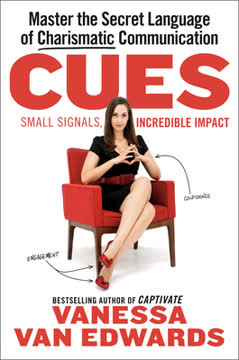
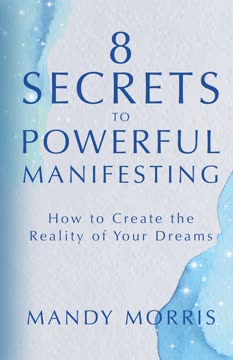

Download PDF
Download EPUB
.epub digital book format is ideal for reading ebooks on phones, tablets, and e-readers.

